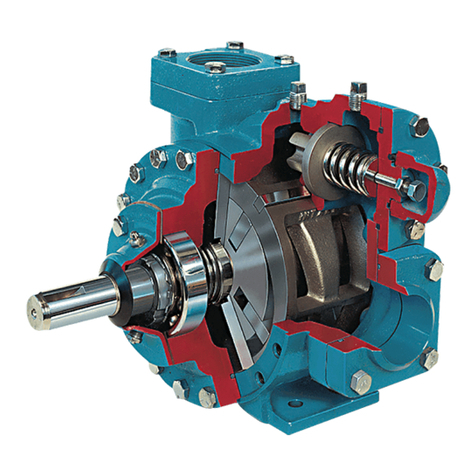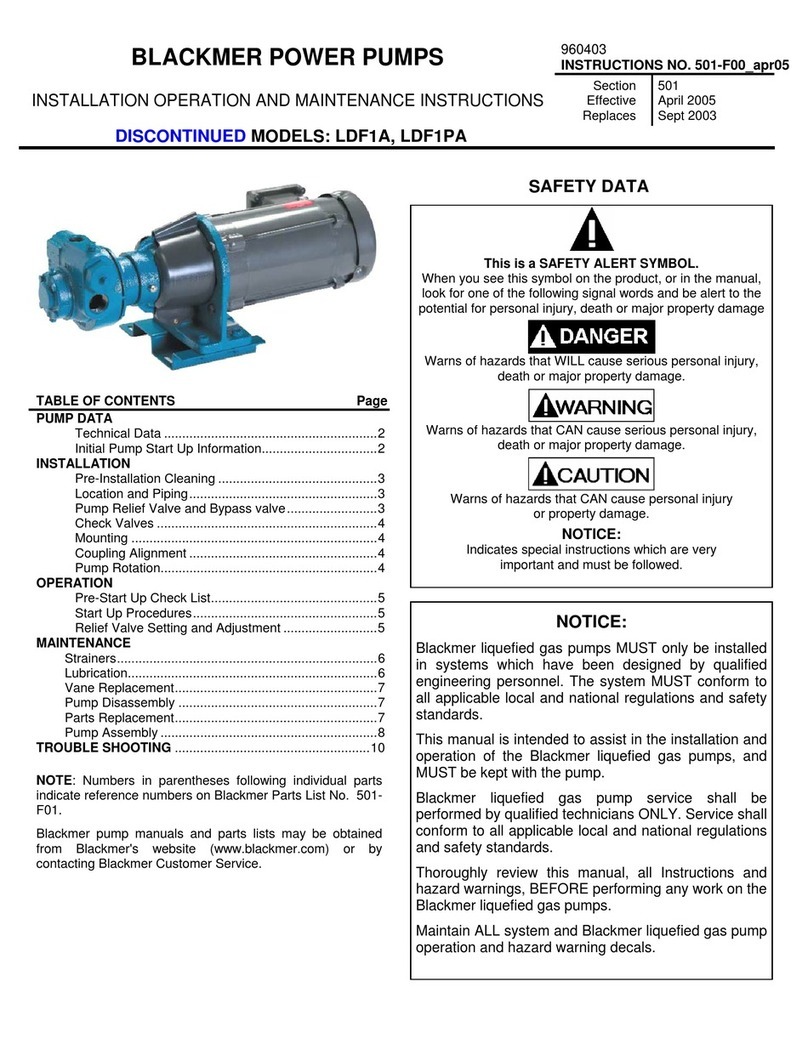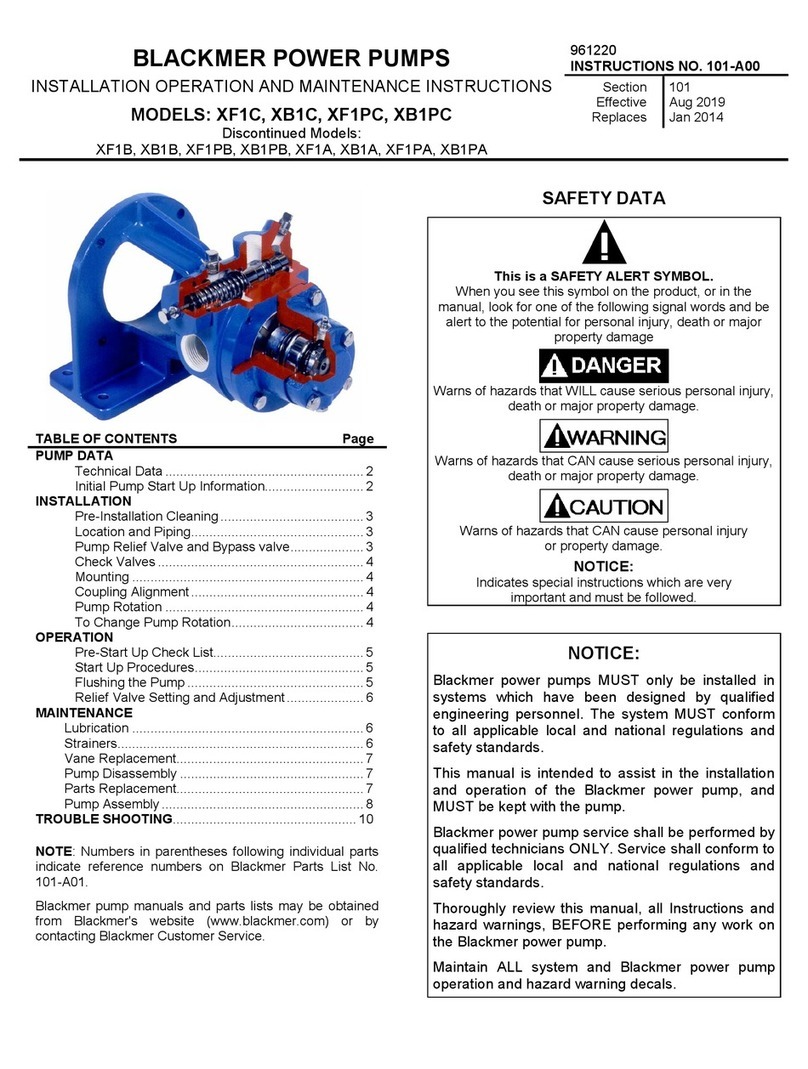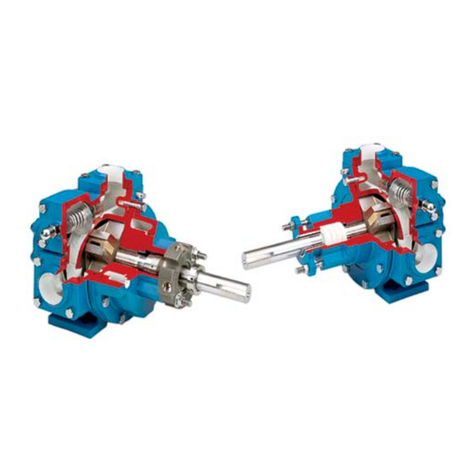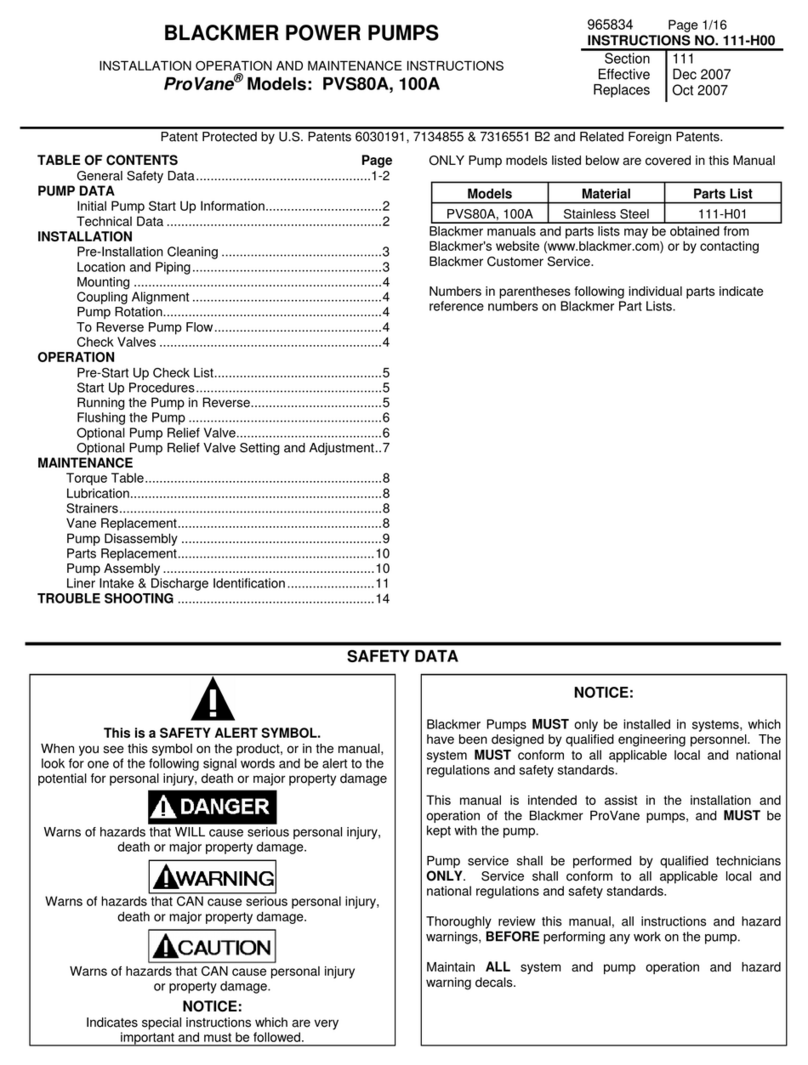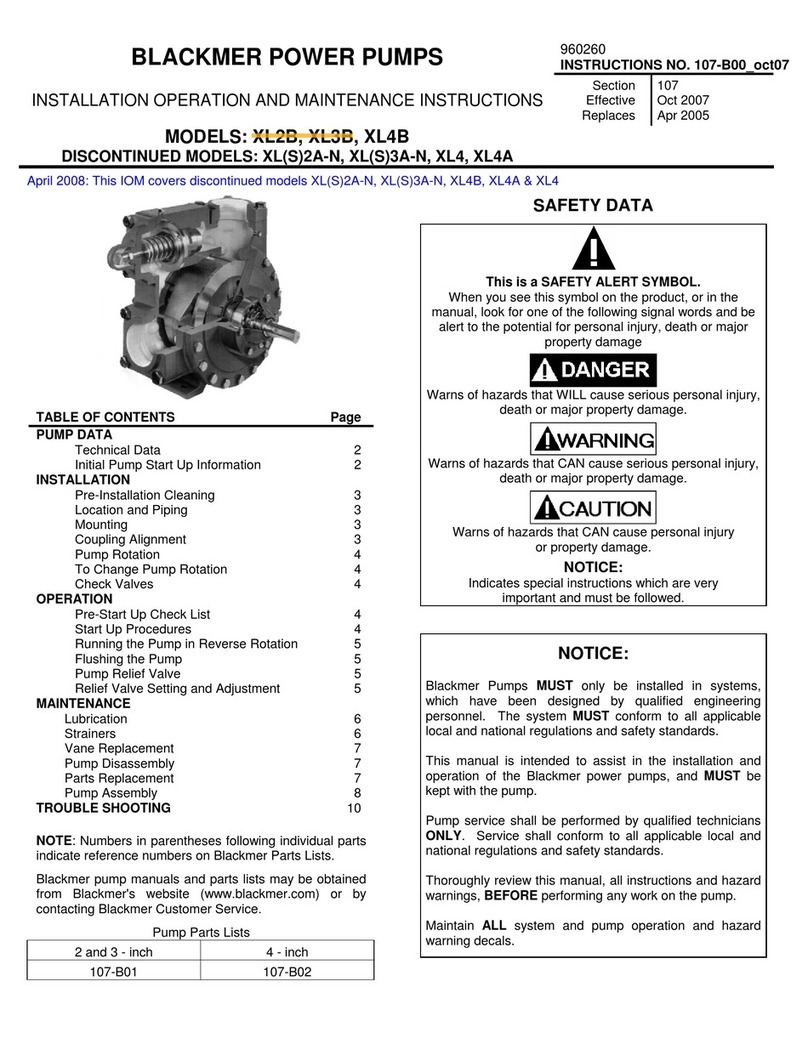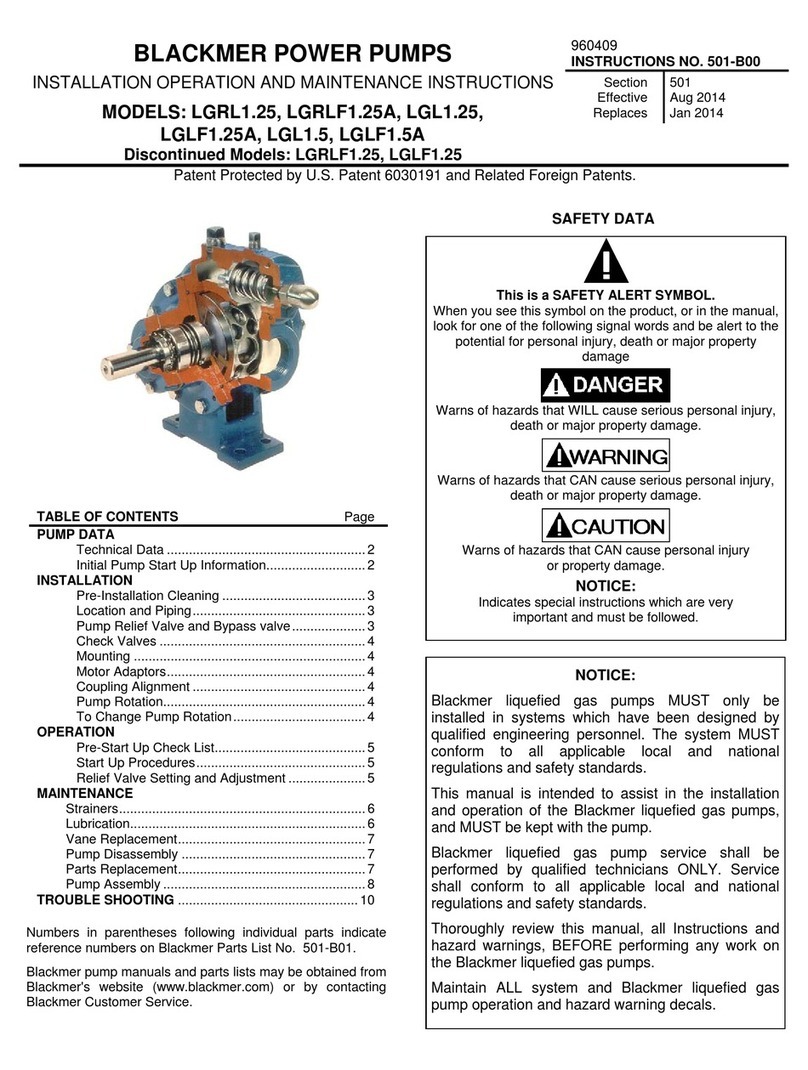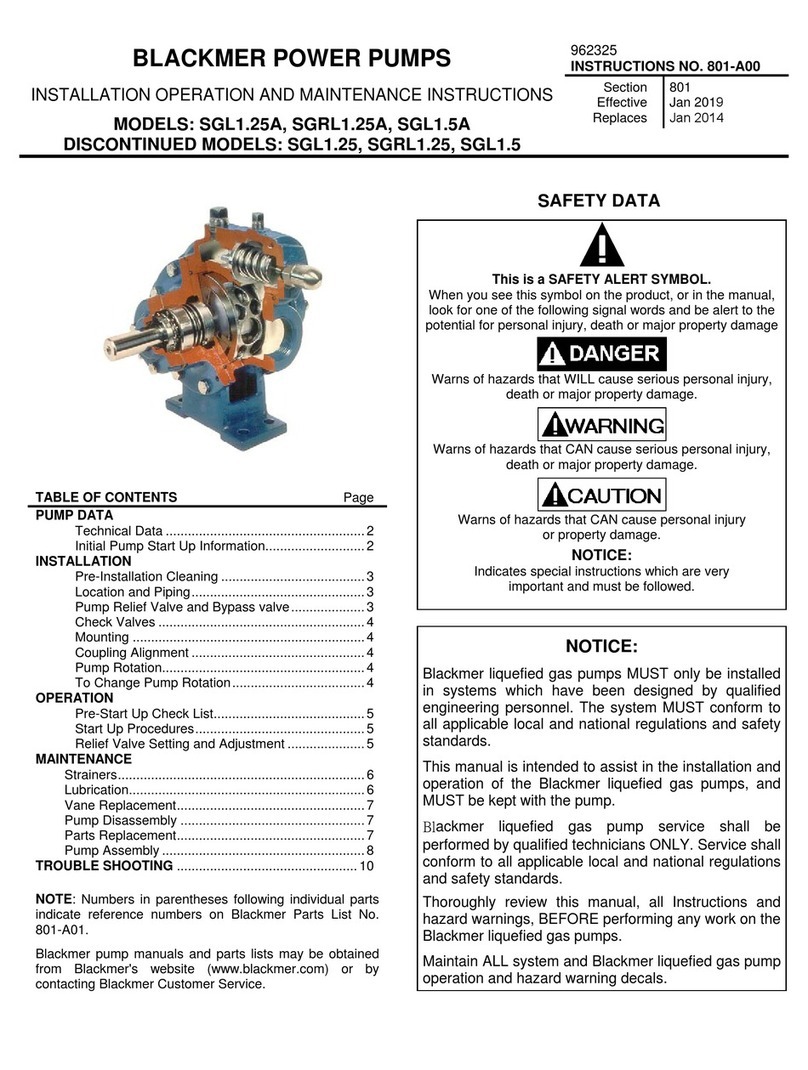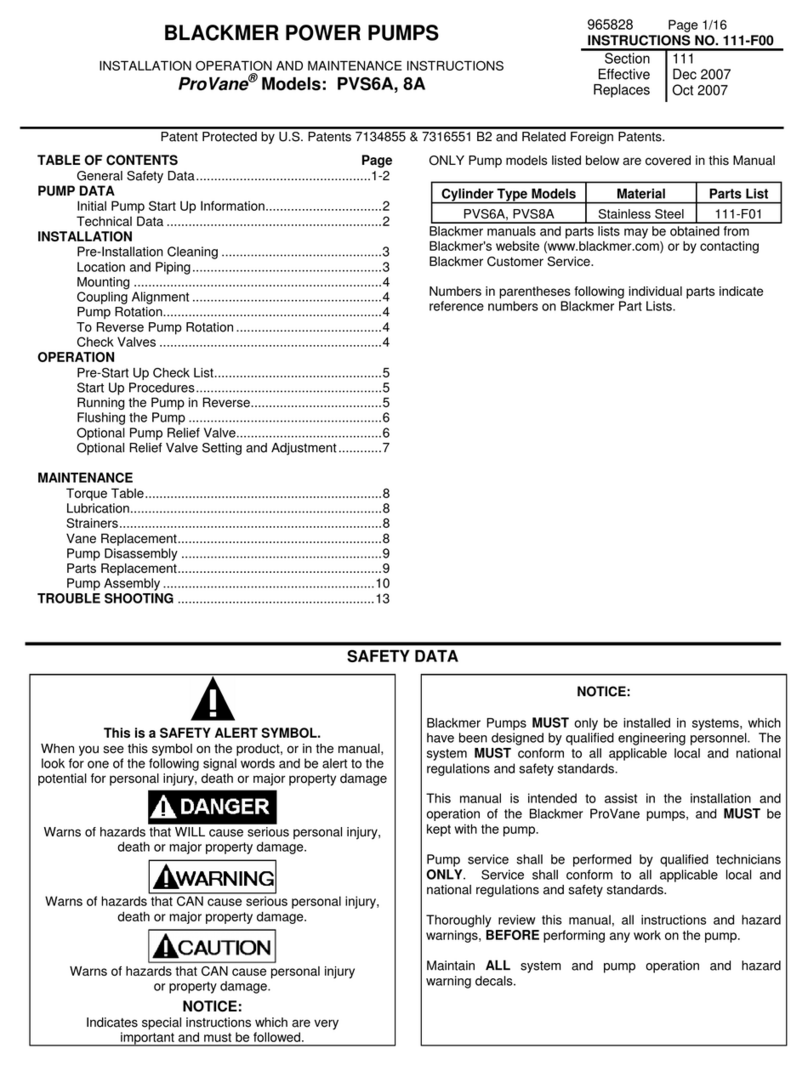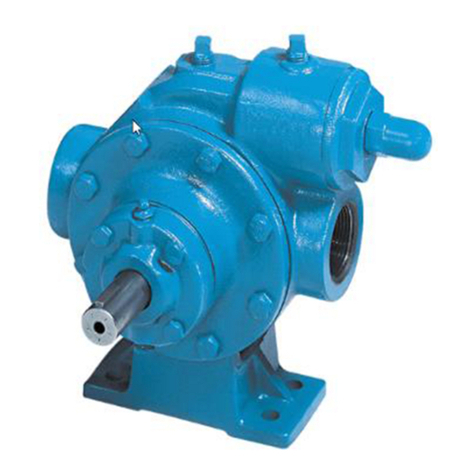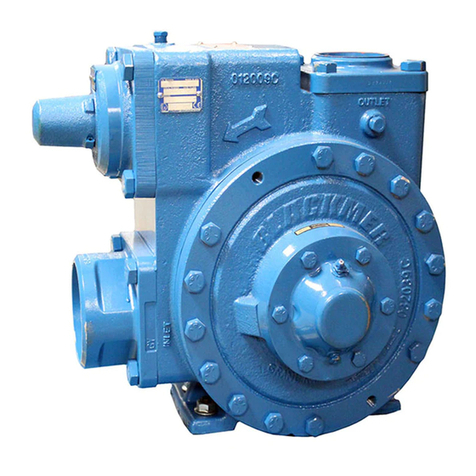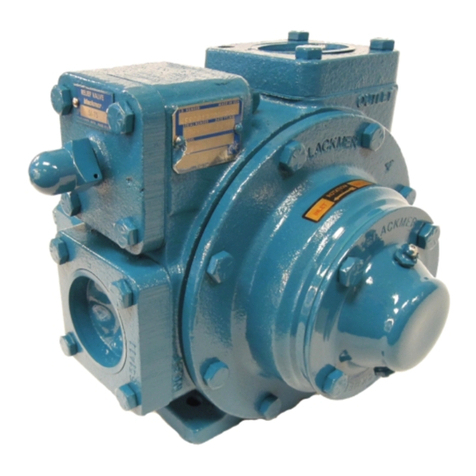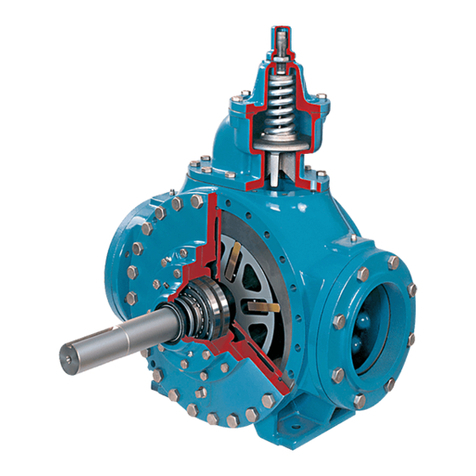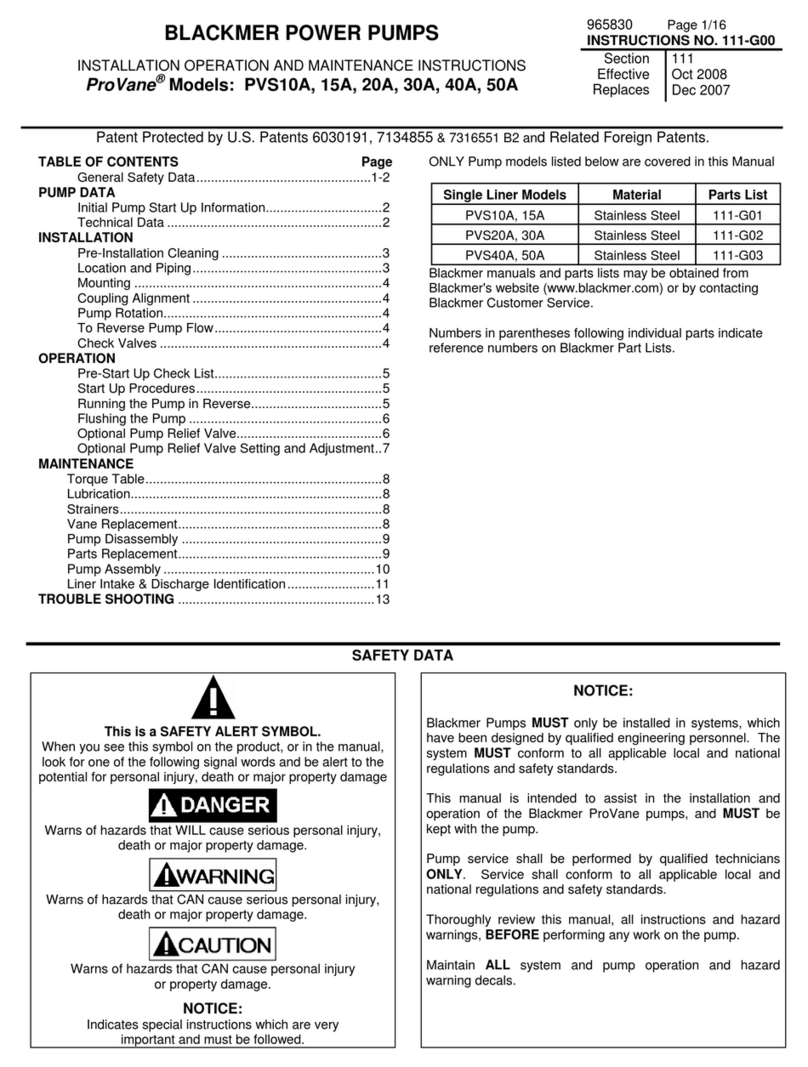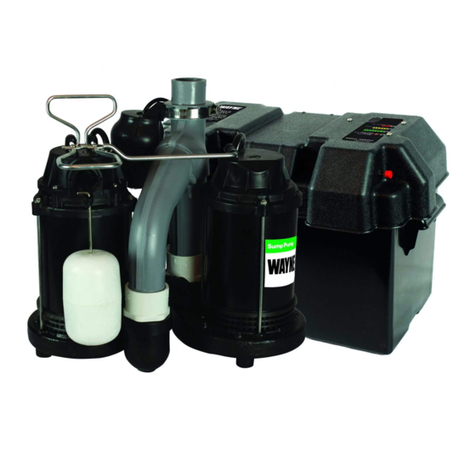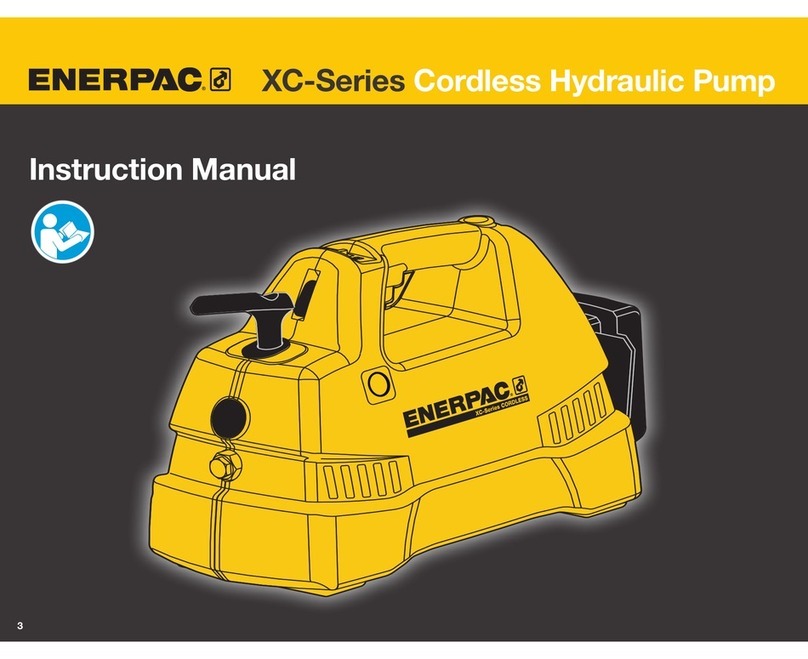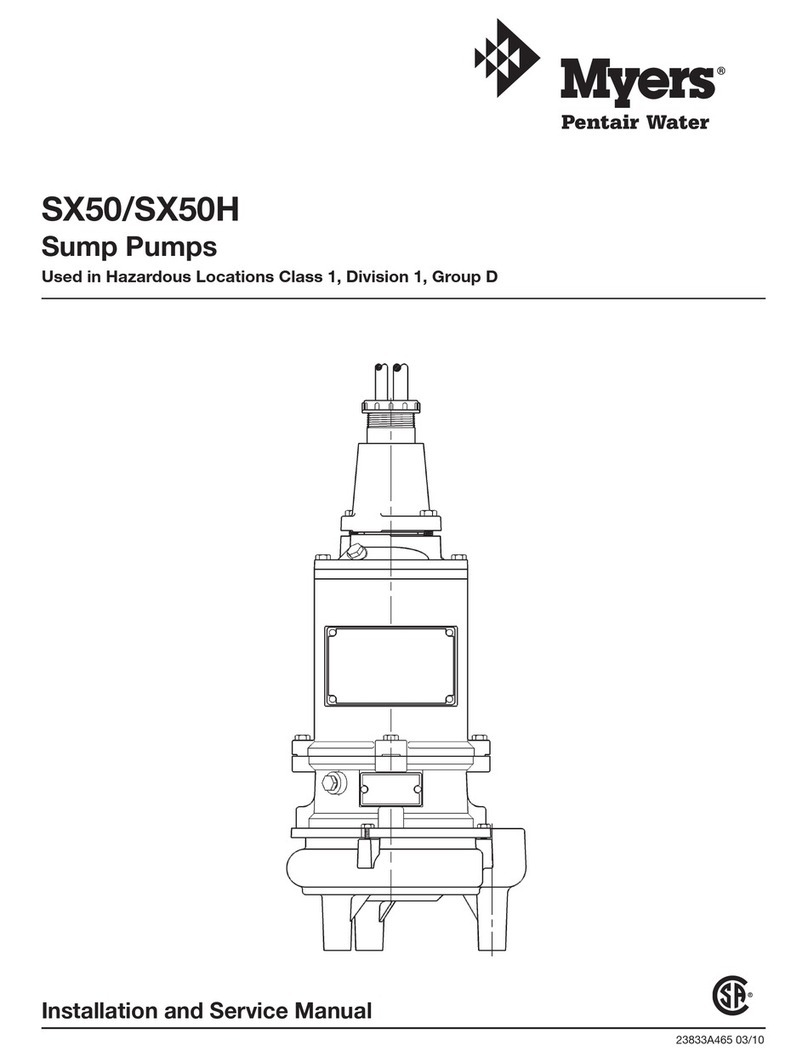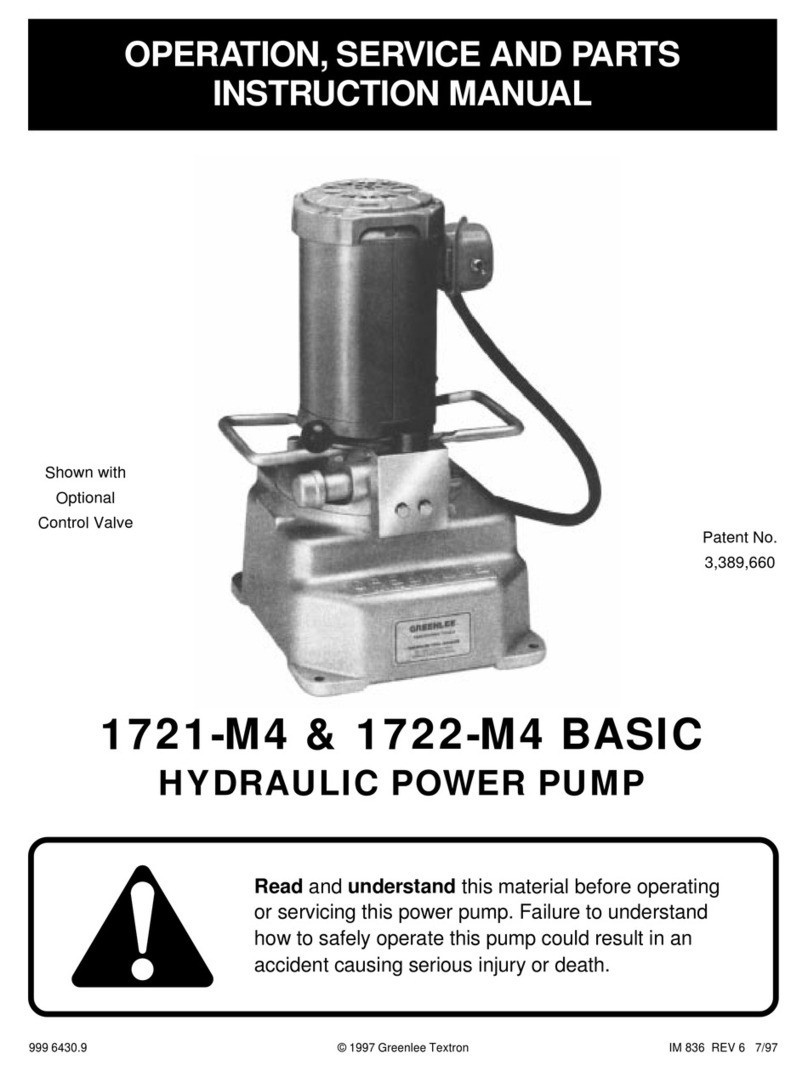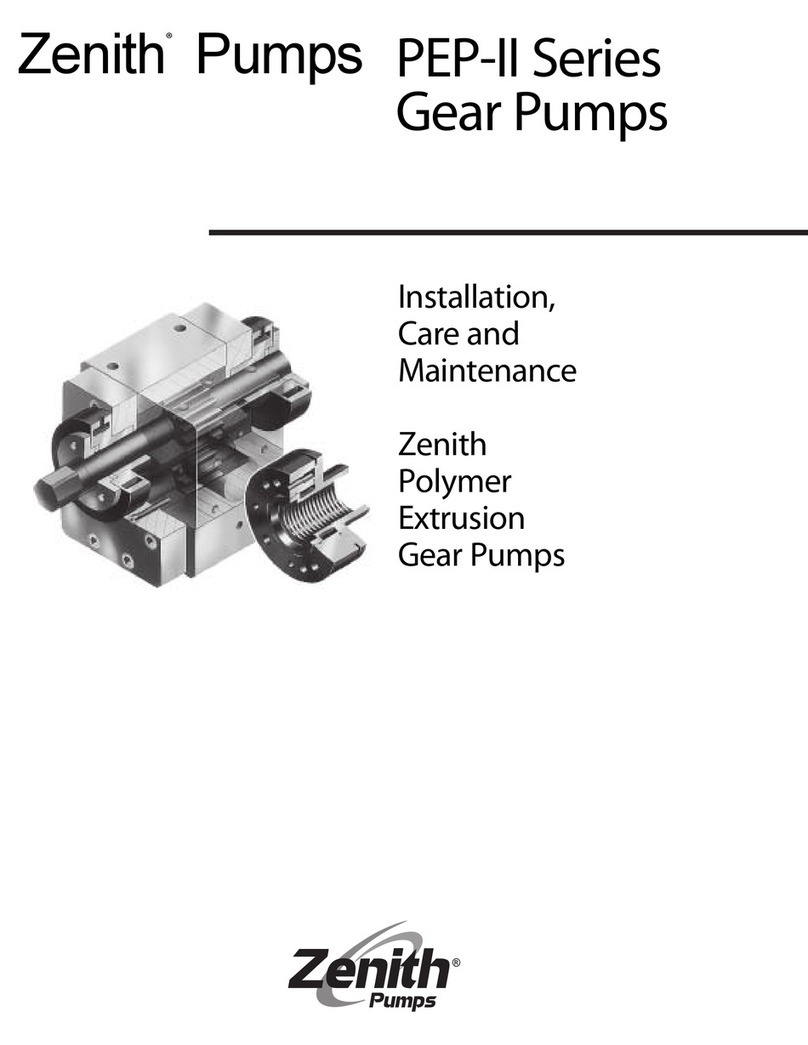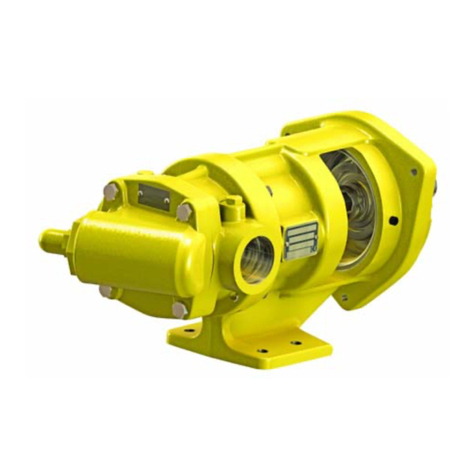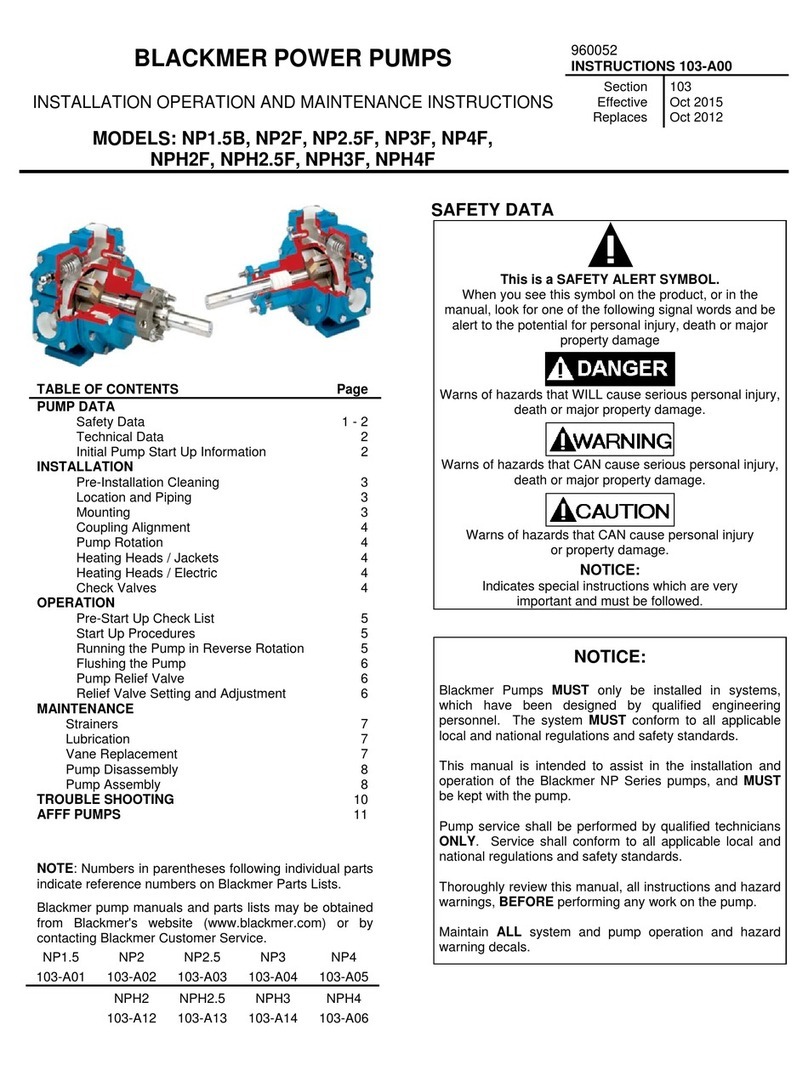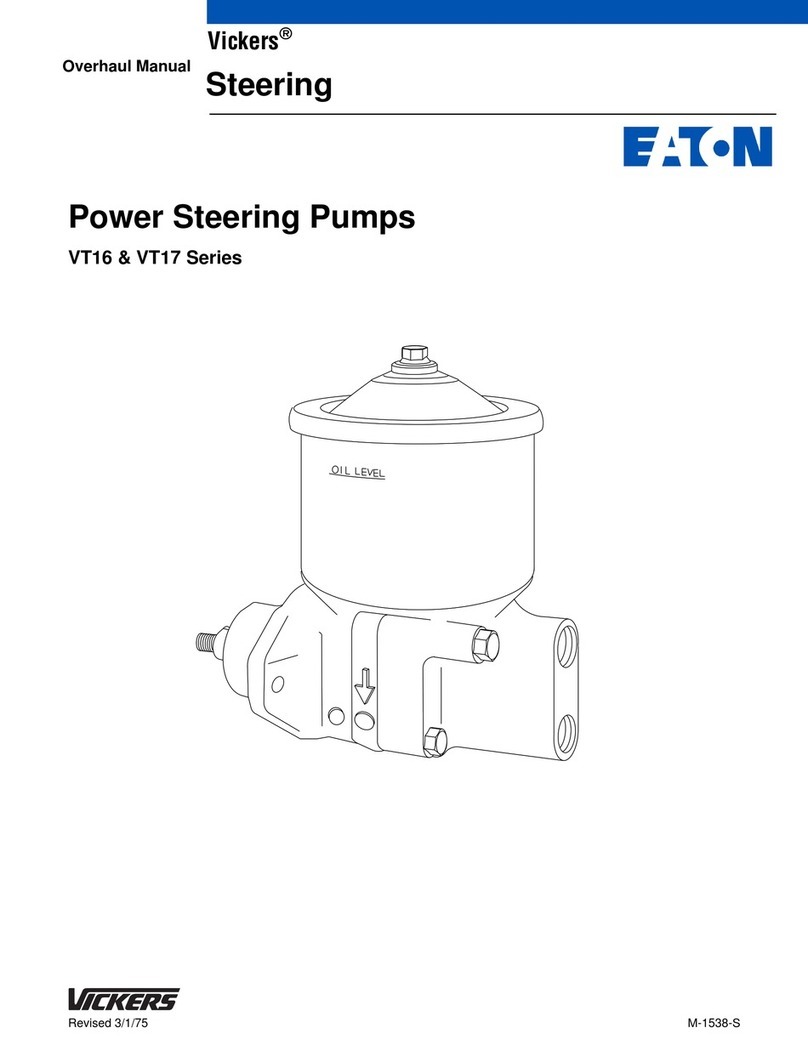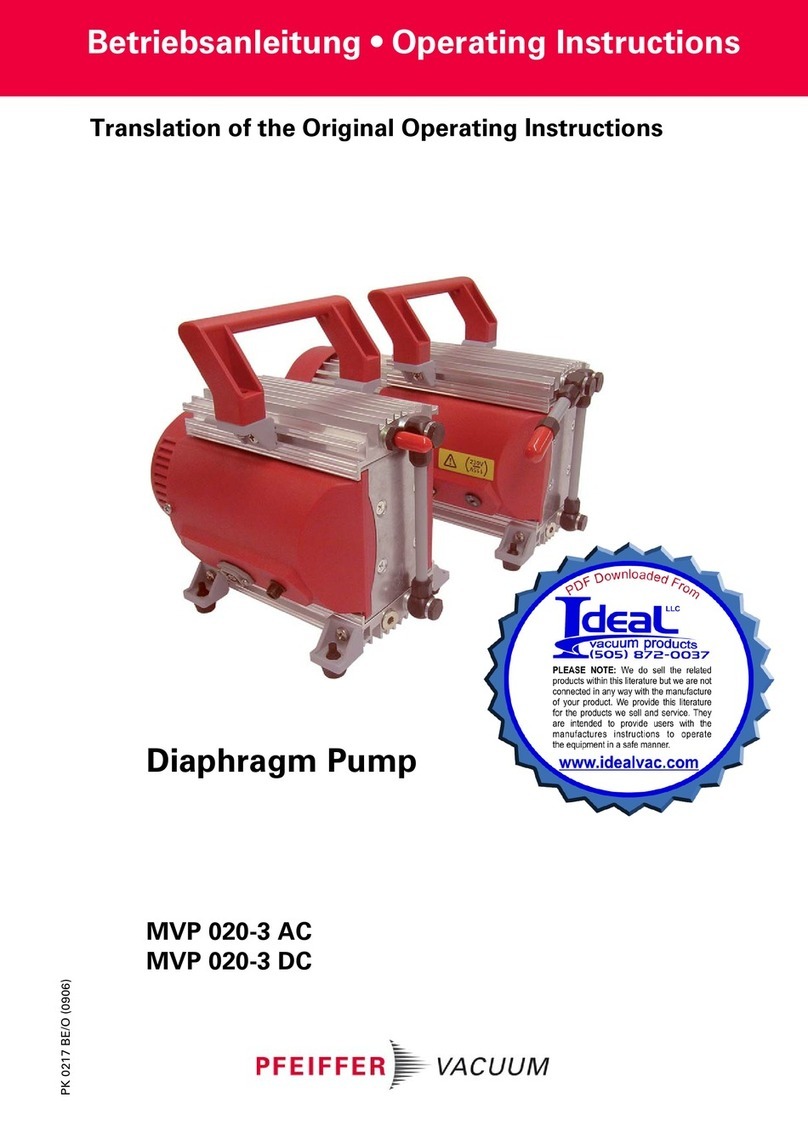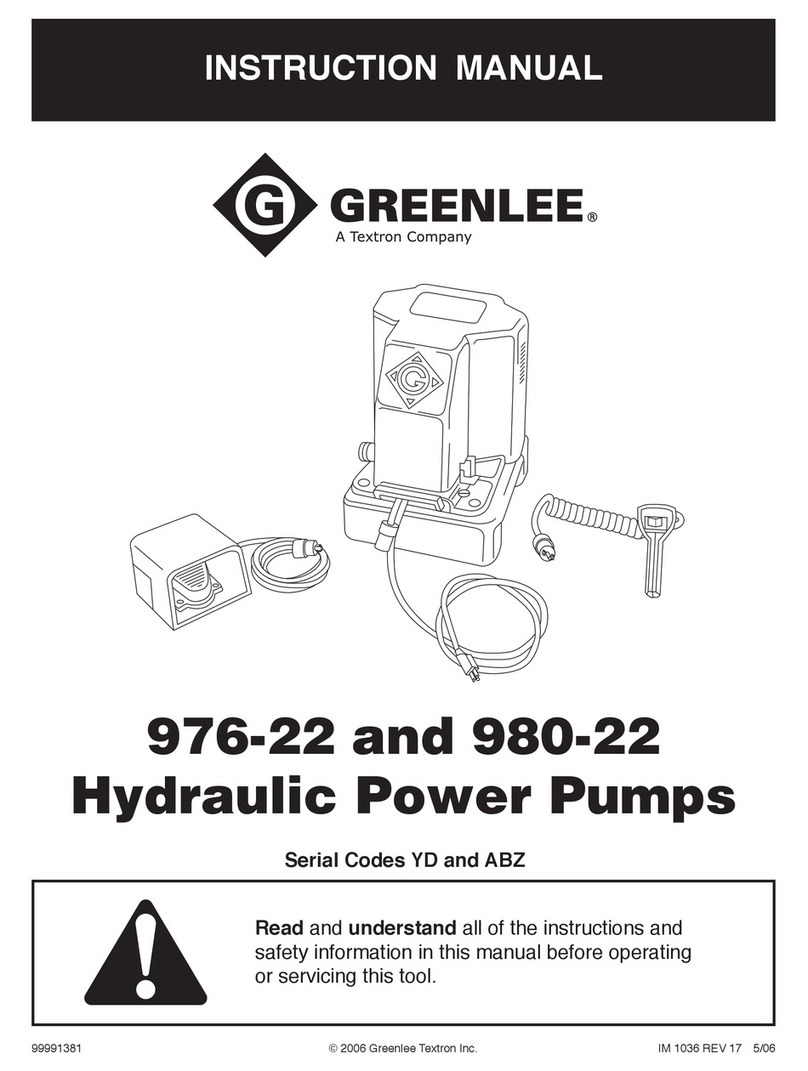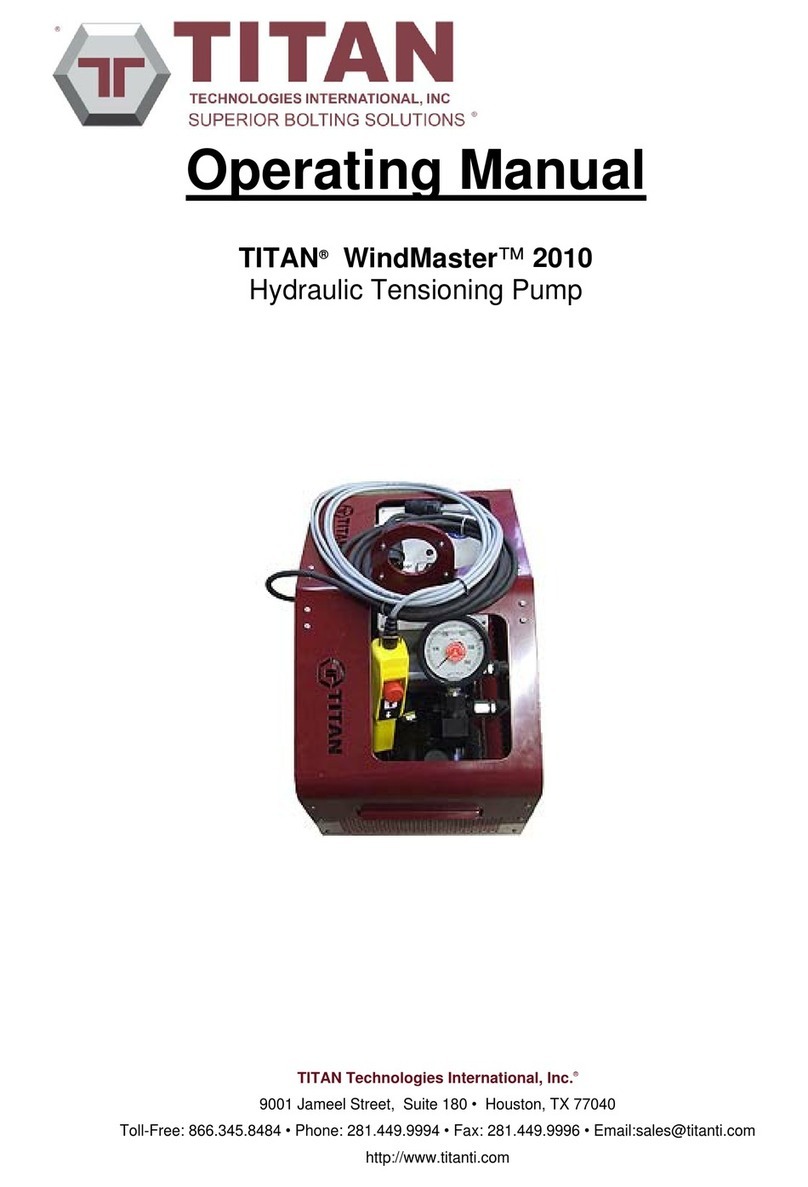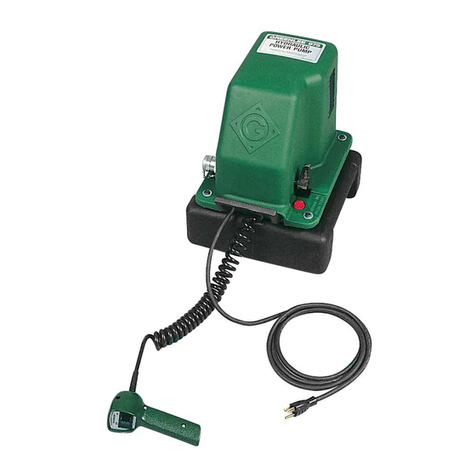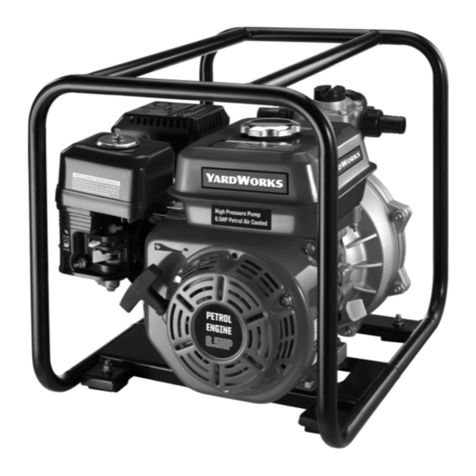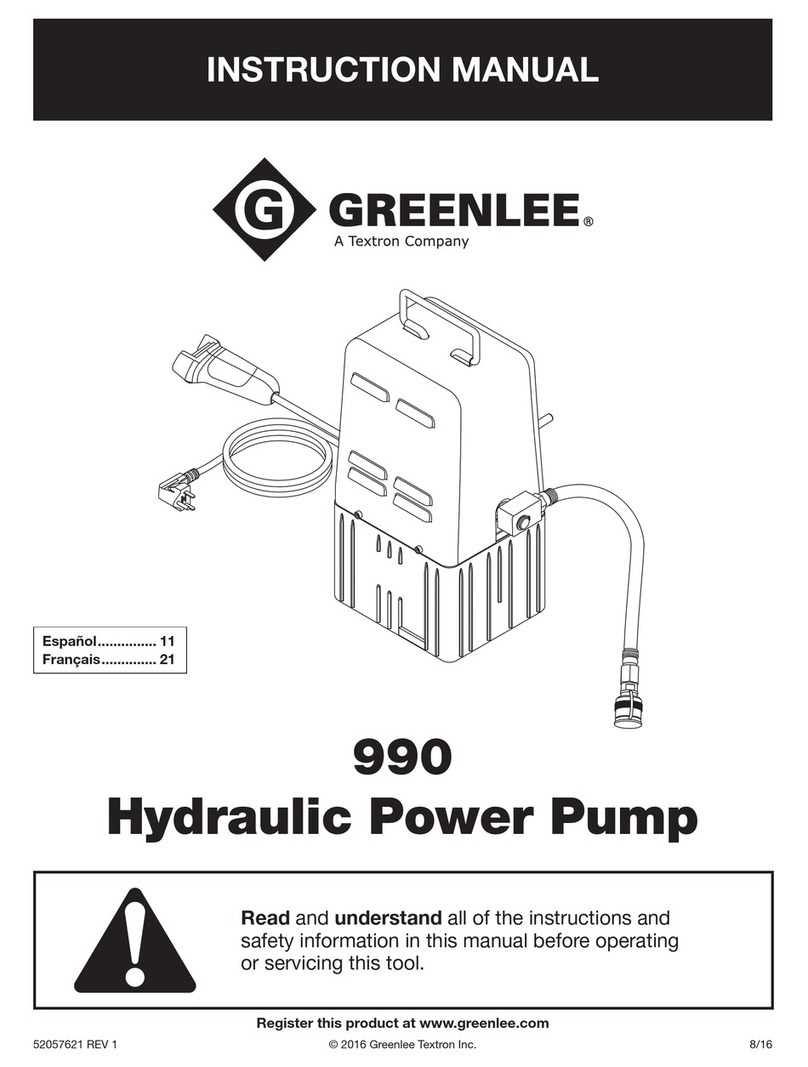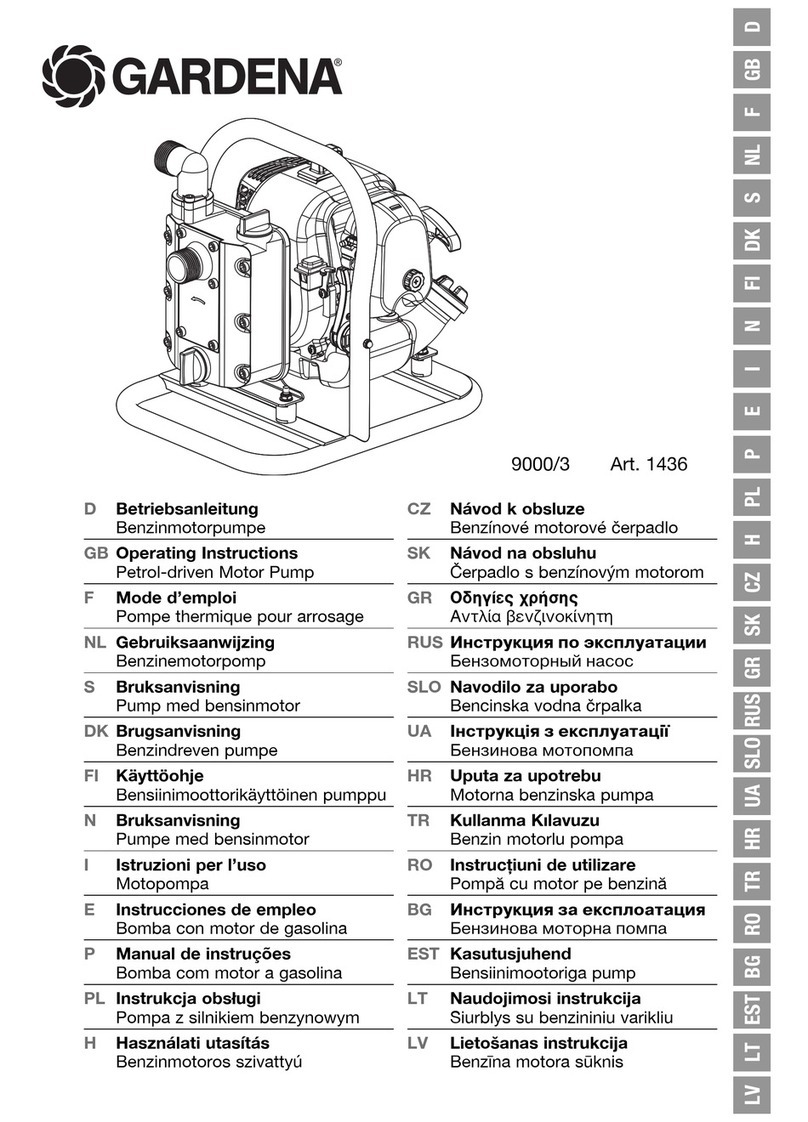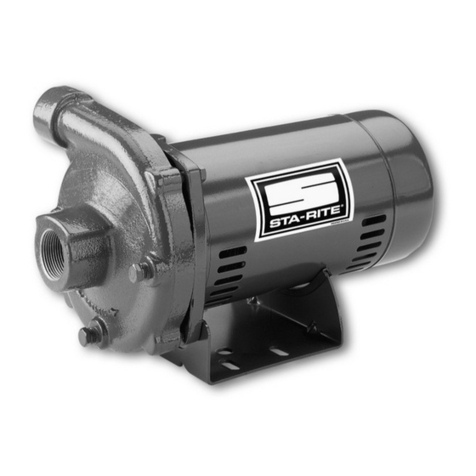
104-A00 Page 9/12
MAINTENANCE
8. Inspect the vanes (14) and push rods (77) for wear and
damage, and replace as follows:
a. Partially install the non-driven end of the rotor and
shaft (13) into the open side of the pump cylinder.
b. Leave part of the rotor outside of the cylinder so that
the bottom vanes can be installed and held in place
as the push rods are installed in the push rod holes of
the rotor. Insert the new vanes into the rotor slots with
the rounded edges outward, and the vane relief
grooves facing TOWARDS the direction of rotation.
See Figure 4.
c. After the bottom vanes and push rods are installed,
insert the rotor and shaft fully into the cylinder.
d. Install the remaining vanes into the top positions of
the rotor. Rotate the shaft by hand to engage the
drive tangs of the seal jacket in the rotor slots.
9. Install the inboard head, mechanical seal and bearing as
instructed in steps 2 through 6. Apply a thin coating of
motor oil on the inboard shaft to aid installation.
10. Rotate the shaft by hand to engage the mechanical seal
drive tangs and to test for binding or tight spots. If the
rotor does not turn freely, lightly tap the rims of the heads
with a soft faced mallet until the correct position is found.
Install all of the remaining head capscrews for each head
and uniformly torque to 25 lbs. ft (34 Nm).
11. LOCKNUT INSTALLATION
The bearing locknuts (24A) and lockwashers (24B) MUST
be installed and adjusted properly. Overtightening
locknuts can cause bearing failure or a broken
lockwasher tang. Loose locknuts will allow the rotor to
shift against the heads, causing wear. See Figure 10.
a. On both ends of the pump shaft, install a lockwasher
(24B) with the tangs facing outward, followed by a
locknut (24A) with the tapered end inward. Ensure the
inner tang "A" of the lockwasher is located in the slot
in the shaft threads, bending it slightly, if necessary.
b. Tighten both locknuts to ensure that the bearings are
bottomed in the head recess. DO NOT overtighten
and bend or shear the lockwasher inner tang.
c. Loosen both locknuts one complete turn.
d. Tighten one locknut until a slight rotor drag is felt
when turning the shaft by hand.
e. Back off the nut the width of one lockwasher tang "B".
Secure the nut by bending the closest aligned
lockwasher tang into the slot in the locknut. The pump
should turn freely when rotated by hand.
f. Tighten the opposite locknut by hand until it is snug
against the bearing. Then, using a spanner wrench,
tighten the nut the width of one lockwasher tang.
Tighten just past the desired tang, then back off the
nut to align the tang with the locknut slot. Secure the
nut by bending the aligned lockwasher tang into the
slot in the locknut. The pump should continue to turn
freely when rotated by hand.
g. To check adjustment, grasp the nut and washer with
fingers and rotate back and forth. If this cannot be
done, one or both locknuts are too tight and should be
alternately loosened one stop at a time (.001"). Begin
by loosening the locknut adjusted last.
h. After adjustment is complete, tighten the locknut set
screws (24C) securely. Remove the bearing cover
capscrews and 3/8" washers from both ends of the
pump.
Figure 10 Locknut Adjustment
12. Inspect the grease seal (104) for wear or damage and
replace as required. Grease the outside diameter of the
grease seal and push it into the bearing cover (27A) with
the lip of the seal inward. The lip will face outward when
the bearing cover is installed on the head
13. Attach a new bearing cover gasket (26) and the bearing
cover to the head. Install and torque the bearing cover
capscrews (28) to 15 lbs. ft (20 Nm).
14. Follow step and 13 to install the bearing cover (27) on the
outboard side of the pump.
15. RELIEF VALVE ASSEMBLY
a. Insert the valve (9) into the relief valve bore of the
cylinder with the fluted end inward.
b. Install the relief valve spring (8) and spring guide (7)
against the valve.
c. Attach a new relief valve gasket (10) and the valve
cover (4) on the cylinder.
d. Screw the relief valve adjusting screw (2) into the
valve cover until it makes contact with the spring
guide (7). NOTICE:
The relief valve setting MUST be tested and
adjusted more precisely before putting the pump
into service. Refer to "Relief Valve Setting and
Adjustment"
e. Install the relief valve cap (1) and gasket (88) after the
relief valve has been precisely adjusted.
16. Reinstall coupling, shaft key, and coupling guards.
Operation without guards in place can
cause serious personal injury, major
property damage, or death.
Do not operate
without guard in
place.
17. Refer to “Pre-Start Up Check List” and “Start Up
Procedures” sections of this manual prior to pump
operation.
